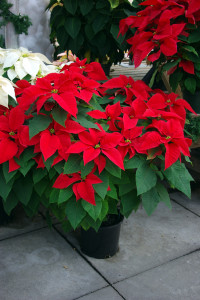Selecting the Best Cultivars for Large Containers
go.ncsu.edu/readext?218330
en Español / em Português
El inglés es el idioma de control de esta página. En la medida en que haya algún conflicto entre la traducción al inglés y la traducción, el inglés prevalece.
Al hacer clic en el enlace de traducción se activa un servicio de traducción gratuito para convertir la página al español. Al igual que con cualquier traducción por Internet, la conversión no es sensible al contexto y puede que no traduzca el texto en su significado original. NC State Extension no garantiza la exactitud del texto traducido. Por favor, tenga en cuenta que algunas aplicaciones y/o servicios pueden no funcionar como se espera cuando se traducen.
Português
Inglês é o idioma de controle desta página. Na medida que haja algum conflito entre o texto original em Inglês e a tradução, o Inglês prevalece.
Ao clicar no link de tradução, um serviço gratuito de tradução será ativado para converter a página para o Português. Como em qualquer tradução pela internet, a conversão não é sensivel ao contexto e pode não ocorrer a tradução para o significado orginal. O serviço de Extensão da Carolina do Norte (NC State Extension) não garante a exatidão do texto traduzido. Por favor, observe que algumas funções ou serviços podem não funcionar como esperado após a tradução.
English
English is the controlling language of this page. To the extent there is any conflict between the English text and the translation, English controls.
Clicking on the translation link activates a free translation service to convert the page to Spanish. As with any Internet translation, the conversion is not context-sensitive and may not translate the text to its original meaning. NC State Extension does not guarantee the accuracy of the translated text. Please note that some applications and/or services may not function as expected when translated.
Collapse ▲Large size poinsettias are increasingly important. While any size of large pot can be used, they are typically grown in 8 to 10 in. pots, normally with 2 to 3 cuttings/pot for 8-in. pots and 3 to 4 cuttings/pot for 10-in. pots. Medium to high vigor cultivars should be used. The cuttings are stuck and pinched two to three weeks before the plants in 6 ½ in. pots. Some low vigor cultivars can be used if they have large bracts and an extra two weeks are added to the large size schedule.
 Plants can also be grown without pinching for dramatically different plants. Prices will need to be higher to account for the extra cuttings required. An 8-in. pot should have 3 to 5 cuttings and a 10-in. pot 5 to 8 cuttings. Cuttings are planted two to three weeks later than plants that are pinched to get the same size.
Plants can also be grown without pinching for dramatically different plants. Prices will need to be higher to account for the extra cuttings required. An 8-in. pot should have 3 to 5 cuttings and a 10-in. pot 5 to 8 cuttings. Cuttings are planted two to three weeks later than plants that are pinched to get the same size.
While only a few growers produce their own cuttings, stock plants can also be used to produce large size plants. Keep in mind that the goal of stock plants is to produce large number of cuttings, but all of those shoots result in many poorly formed bract clusters and unattractive plants. When flowering stock plants be sure to vigorously prune and shape the crown and thin the shoots. Leave only a few strong shoots.
Looking for a specific color, flowering season or plant vigor:
Please use the Poinsettia Cultivar Search to find the right varieties for you. Mark the boxes with the desired criteria on the left to narrow the search.


